Goheal: It's not that you don't chase the wind, it's that you don't understand the "gam
"There are Bole in the world, and then there are Thousand-Li Horses." In the capital market, who is the Bole and who is the Thousand-Li Horse? Who is the speculator who seems to be on the wind, but finally falls to pieces?
In recent years, the mergers and acquisitions of listed companies seem to have become a hot subject. No one wants to be a "slow company" that stands still, and everyone wants to ride the wind - even if the wind may be a bubble. But reality is often ironic: many "reorganization dramas" have become capital performance shows, with lively front stage, undercurrents behind the stage, and even buried risks. To understand the game within the game, you have to see through the subtext written in the announcement, and understand the motivation logic and rule reconstruction behind the capital game.
American Goheal M&A Group
In his latest research, Goheal pointed out that the reason why most small and medium-sized investors "earn a lonely profit" in the mergers and acquisitions market is not information asymmetry, but that they do not understand the underlying intentions of listed companies behind the mergers and acquisitions - is it "setting up a game" or "breaking the game"?
The wind is just a "trailer", and the reorganization is the "main film"
Looking to 2024, many A-share hot sectors, from AI, photovoltaics, new energy vehicles to large models, have one wind after another. But those players who really come out are never followers, but strategists who are good at using capital to "tell stories".
The merger and reorganization of listed companies is the integration of assets on the surface, but it is actually a process of weaving "stories". You think it is to optimize the industrial structure and enhance the synergy effect, but behind it may just be to tell a good story about the stock price. Goheal has found an interesting commonality in dozens of merger and acquisition cases: all companies that have successfully raised their stock prices and maintained steady growth through mergers and acquisitions are mostly "strategically self-consistent" behind them-that is, the acquisition target is deeply complementary to the company's main business, and has room for synergistic expansion after integration.
But more often, we see "skin-changing" reorganization. In order to restart imagination, shell companies with long-term low market value have introduced assets that are "old wine in new bottles". Various technical buzzwords are piled up in the restructuring announcements, such as AI, optical storage, intelligent computing, virtual humans... However, the actual business integration is low, implementation is difficult, and the valuation is inflated, and the final result is often a tiger's head but a snake's tail. This type of restructuring is a hot topic on the surface, but in fact it is a stage for capital turnover.
What's more ironic is that some investors rush in immediately when they see the word "restructuring", just like mice smelling cheese. But they don't know that the cheese is not prepared for them, but a game set for the next round of "storytelling".
Game within a game: Who are the real players in the restructuring?
The front-stage roles of listed companies' mergers and acquisitions are very clear: listed companies, merger targets, and external intermediaries. But the real chess players are often hidden very deeply.
From the perspective of the initiators of mergers and acquisitions, the first goal of most listed companies in promoting mergers and acquisitions is not "development", but "survival" or "maintaining stability". Especially those companies with poor fundamentals, whose main business is close to the ceiling and facing the risk of delisting, are more inclined to tell a big story of "transformation" or even "nirvana" through asset injection, shell retention, financial face-changing, etc., so as to activate the stock price, attract funds, and then cooperate with fixed increase, reduction, and lifting of restrictions to complete the withdrawal of funds.
From the perspective of the target company, backdoor listing is the most cost-saving "first-level channel". There is no need to endure the IPO queue or face complex supervision. You only need to negotiate the price with the original controlling shareholder, smoothly take the position, and become a public company.
Don't forget, there are also "mysterious forces" - such as hot money, structured funds, and related parties. Goheal pointed out in sorting out 40 failed mergers and acquisitions in 2023 that more than 60% of the failed cases had a typical operation path of "pulling up-merger announcement-reduction exit" in the early stage. This is a clever way for capital to cut leeks: mergers and acquisitions are just bait, and the ultimate goal is to move funds.
What you see is "strategic synergy" in the announcement, but behind the scenes may be a "precise harvest".
Financial skills are more important than fists and feet, and restructuring does not mean revaluation
The word restructuring carries a "revaluation" filter in the eyes of many people, but the reality is: restructuring without fundamental support is just an old problem in a different disguise.
Let's look back at the "game" from several typical failure cases. There was once an A-share company mainly engaged in new energy. After several years of losses, it suddenly announced the acquisition of a game company at a price-earnings ratio of 30 times. The market was enthusiastic at the beginning, and the stock price soared three times. But two years later, the game company's users declined, revenue plunged, goodwill impairment exceeded 1 billion, the net assets of the listed company were negative, and it was eventually delisted.
Goheal pointed out that this type of case is not an individual case, but a standard path of "high premium acquisition-valuation bubble burst-goodwill explosion". The essential problem is not the "acquisition" action, but the "serious mismatch between the valuation of the merger and acquisition and the target profitability".
Good mergers and acquisitions are never about changing tracks, but "strategic integration" and "organizational symbiosis". Even if it is cross-border, it is necessary to find the connection points of business, resources, and users, rather than just piling up "synergy effects" by imagination.
Blind spots are often hidden outside the announcement.
When most investors read the announcement, they focus on valuation, revenue, and net profit, but they tend to ignore structural details, such as:
1. Is it a cash acquisition or a share issuance?
2. Is the gambling clause set reasonably?
3. Will the actual control change after the acquisition is completed?
4. Does the target company have hidden debts or undisclosed related transactions?
These "technical details" are the real risk control watershed. For example, in a certain A-share restructuring, the target company showed profits for three consecutive years in the announcement, but did not disclose that its core income came from a single customer, and the customer disappeared due to regulatory rectification, resulting in a cliff-like decline in the target business, and the listed company broke out a huge goodwill impairment in just one year.
And the "gambling clause" is even more of a blind spot trap. On the one hand, short-term gambling encourages the target company to meet the target by inflating profits, and in the long run, it leads to frequent merger and acquisition sequelae. On the other hand, if the gambling fails, whether the compensation mechanism is rigidly implemented and whether effective guarantees are set up, all these need to be carefully identified.
From "M&A" to "Controlling the Game": How do masters play chess?
Real masters do not chase the wind, but create the wind. Their goal is not to bet on an "industry that will rise", but to build a closed loop of capital logic that allows them to take the initiative.
For example, a certain enterprise quickly integrates upstream and downstream resources through mergers and acquisitions, which improves bargaining power on the one hand and enhances industrial synergy on the other hand, and finally forms a complete industrial chain closed loop, and then improves valuation through the secondary market, attracts funds to build positions, completes targeted share issuance financing, and then expands through mergers and acquisitions again, entering the "flywheel effect" cycle.
The key to this set of tactics is: use acquisitions to build fundamentals, use stock prices to clarify expected logic, and then use capital to feed back mergers and acquisitions.
Goheal summarizes it as a "three-in-one acquisition system":
1) Strategic closed loop,
2) Financial control,
3) Capital rhythm synchronization.
Only mergers and acquisitions under this situation can be called "high-quality restructuring" rather than blindly joining the fun.
In the end: The end of restructuring is not the wind, but the systematic winning rate
Mergers and acquisitions are not a panacea or a life-saving straw. They are a capital tool to build a company's long-term competitiveness. If this tool is used well, it is like a carp leaping over the dragon gate; if it is not used well, it is a goodwill explosion and delisting and liquidation.
The current M&A market is still active, but the player structure is undergoing subtle changes: more and more investors who have mastered professional tools and data analysis capabilities are gradually squeezing out blind followers. What is really worth thinking about is whether you have the ability to identify the "game" of M&A, and whether you have the ability to see what the operator really wants from financial reports, announcements, structures, and market signals.
You see the title of the announcement, and the experts see the layout logic behind it.
Goheal Group
So the question is: in the M&A case you have been paying attention to recently, do you really understand whether it is a "value acquisition" or a "financial game"?
Welcome to leave a message in the comment area and talk about the "game within the game" in your eyes.
[About Goheal] Goheal is a leading investment holding company focusing on global M&A holdings. It has been deeply involved in the three core business areas of acquisition of listed company control, M&A and reorganization of listed companies, and capital operation of listed companies. With its deep professional strength and rich experience, it provides enterprises with full life cycle services from M&A to reorganization to capital operation, aiming to maximize corporate value and achieve long-term benefit growth.


